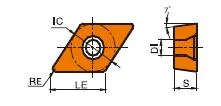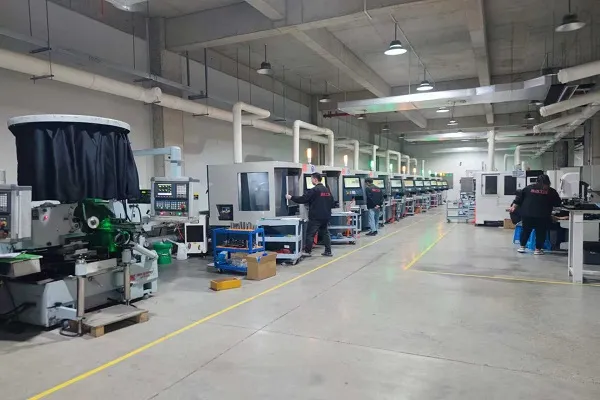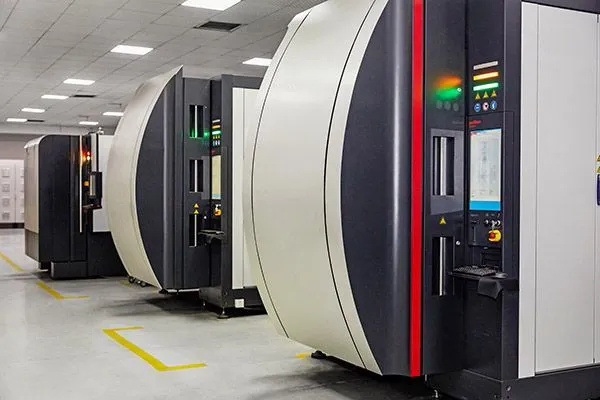

Inserto DCMT
Angolo dell'inserto DCMT: 7° Inserto a rastrello positivo con rompitruciolo su un solo lato;.
Inserto di tornitura rombico a 55°;
Consigliato per acciaio, acciaio inossidabile e ghisa;.
Applicazione del demolitore: Lavorazione di semifinitura;
Abbinamento Porta inserti DCMT: SDQCR/L, SDUCR/L;
Materiale: Carburo di tungsteno;
Grado: sia PVD che CVD;
Settore di applicazione: Stampi, dispositivi medici, produzione e altri;.
Articolo correlato: DCMT contro DCGT.
Specifiche dell'inserto DCMT
Per inserto DCMT si intende un inserto di taglio diamantato (55 gradi), indicizzabile, con un angolo di spoglia di 7 gradi, tolleranze moderate e un rompitruciolo incorporato.
Questi inserti sono comunemente utilizzati per varie operazioni di tornitura nella lavorazione dei metalli.
Il raggio del naso ha effetti cruciali sulla finitura superficiale, sulla rottura del truciolo e sulla resistenza dell'inserto.
Offriamo diverse selezioni di raggi di curvatura per migliorare la qualità del lavoro. In generale, un raggio di punta ridotto comporta una profondità di taglio ridotta, riduce le vibrazioni e migliora la rottura del truciolo.
Dall'altro lato, il raggio di punta grande è adatto a un'elevata velocità di avanzamento, a grandi profondità di taglio e a una forte stabilità dei bordi.
Il rapporto tra il raggio del naso e la profondità di taglio influisce sulla tendenza alle vibrazioni.
Portautensili per inserti DCMT


Inserto DCMT Significato
Comprendere il codice dell'inserto DCMT
- D: Forma: Rombo (diamante) con angolo incluso di 55 gradi.
- C: Angolo di passaggio: 7 gradi (positivo)
- M: Tolleranza: La tolleranza media è standard, ma possono essere disponibili altre tolleranze di precisione.
- T: Stile del rompitruciolo e configurazione del foro. Questa lettera indica la geometria specifica del rompitruciolo e se l'inserto ha un foro o meno. Le varianti del rompitruciolo sono numerose e specifiche del produttore.
- Cifre numeriche:
- Le prime due cifre: Diametro del cerchio inscritto (IC) in millimetri. Per ottenere l'equivalente approssimativo in pollici, dividere questo numero per 25,4.
- Successivo Due cifre: Spessore in millimetri. Dividere per 25,4 per convertire in pollici.
- Ultime due cifre: Raggio del naso in millimetri. Per convertire in pollici, dividere per 25,4.
Dimensioni dell'inserto DCMT (ISO e ANSI)
| Dimensioni dell'inserto DCMT | |||
|---|---|---|---|
| Designazione DCMT | Cerchio iscritto (IC) | Spessore | Raggi d'angolo comuni |
| DCMT 21.51 (DCMT 0702) | 0.25" (1/4") | 0.094" (3/32") | 0.0156" (1/64") |
| DCMT 070204 | 7,94 mm (0,313") | 2,38 mm (0,094") | 0,4 mm (0,016") |
| DCMT 32,51 (DCMT 11T3) | 0.5" (1/2") | 0.156" (5/32") | 0.0312" (1/32"), 0.0469" (3/64"), 0.0625" (1/16") |
| DCMT 11T304 | 11 mm (0,433") | 3,18 mm (0,125") | 0,4 mm (0,016") |
| DCMT 11T308 | 11 mm (0,433") | 3,18 mm (0,125") | 0,8 mm (0,031") |
Esempio: DCMT 11T308
- Forma romboidale (diamante) con angolo di inclusione di 55 gradi
- Angolo di sicurezza positivo di 7 gradi
- Tolleranza media
- Configurazione del rompitruciolo e del foro specifica del produttore
- Diametro del cerchio inscritto 11 mm (circa 0,43″ in pollici)
- 3,18 mm di spessore (circa 0,125″ in pollici)
- Raggio del naso di 0,8 mm (circa 0,031″ in pollici)
La scienza degli inserti in metallo duro: Come sono fatti e perché sono così forti
Gli inserti in metallo duro sono tra gli utensili da taglio più versatili e durevoli che esistano. Ma come sono fatti? E cosa li rende così resistenti? In questo video esploreremo la scienza alla base degli inserti in metallo duro, dalle proprietà del carburo di tungsteno al processo di produzione.
La nostra capacità di produzione










